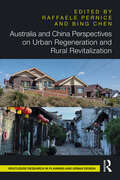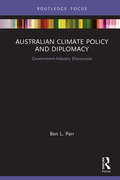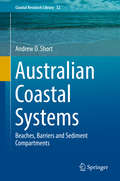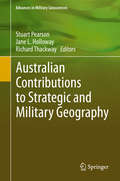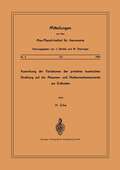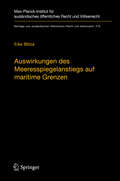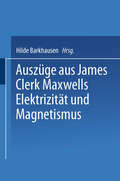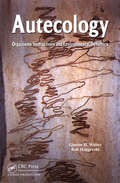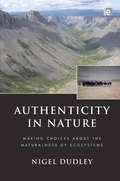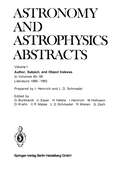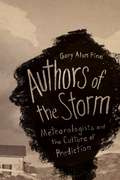- Table View
- List View
Australia: A Bibliography Of A Nation
by R M Crawford Phillip KnightleyAustralia celebrated one hundred years as a nation in 2001. This book - part history, part travelogue, part memoir - tells the inspiring story of how a one-time British colony of convicts turned itself into a prosperous and confident country. Through the eyes of ordinary people, Phillip Knightley describes Australia's journey, from federation and the trauma of the First World War, the desperate poverty of the Depression, with its attendant spectres of secret armies and near-civil war, the threat of invasion in the Second World War and the immigration that followed it, and the slow but steady decline in the relationship with Britain, the 'Mother Country', as Australia forged its own unique identity.
Australia and China Perspectives on Urban Regeneration and Rural Revitalization (Routledge Research in Planning and Urban Design)
by Raffaele Pernice Bing ChenThis edited volume reviews important contemporary issues through relevant case studies and research in China and Australia, such as the challenges posed by climate change, the development of eco-urban design, research on sustainable habitats and the relationship between ecology, green architecture and city regeneration, as well as, in general, the future of the city in the new millennium.The authors represent a broad selection of international experts, young scholars and established academics who discuss themes related to urban–rural destruction and economic and spatial regeneration techniques, the sustainable reconversion of natural landscapes and eco-urban design in the context of the current evolution of architectural and urbanism practice. The book aims to explain the conditions in which the contemporary debate about urban regeneration and rural revitalisation has developed in Australia and China, presented by different theoretical and methodological perspectives. It also provides a multifaceted and critical analysis of relevant case studies and urban experiences in Australia and China, focusing on environmental disruption, resized urban interventions and the need for more efficient and sustainable forms of regeneration and urban renewal practice in urban–rural contexts.This book will be an invaluable resource for architects, planners, architectural and urban historians, geographers, and scholars interested in modern Australian and Chinese architecture and urbanism.
Australia and China Perspectives on Urban Regeneration and Rural Revitalization (Routledge Research in Planning and Urban Design)
This edited volume reviews important contemporary issues through relevant case studies and research in China and Australia, such as the challenges posed by climate change, the development of eco-urban design, research on sustainable habitats and the relationship between ecology, green architecture and city regeneration, as well as, in general, the future of the city in the new millennium.The authors represent a broad selection of international experts, young scholars and established academics who discuss themes related to urban–rural destruction and economic and spatial regeneration techniques, the sustainable reconversion of natural landscapes and eco-urban design in the context of the current evolution of architectural and urbanism practice. The book aims to explain the conditions in which the contemporary debate about urban regeneration and rural revitalisation has developed in Australia and China, presented by different theoretical and methodological perspectives. It also provides a multifaceted and critical analysis of relevant case studies and urban experiences in Australia and China, focusing on environmental disruption, resized urban interventions and the need for more efficient and sustainable forms of regeneration and urban renewal practice in urban–rural contexts.This book will be an invaluable resource for architects, planners, architectural and urban historians, geographers, and scholars interested in modern Australian and Chinese architecture and urbanism.
Australian Caves and Karst Systems (Cave and Karst Systems of the World)
by Susan White John Webb Garry K. SmithThis book, part of the series Cave and Karst Systems of the World, begins with a review of the interaction between people and caves in Australia (including conservation), followed by descriptions of the spectacular cave diving sites, before comprehensively covering all the major carbonate and noncarbonate karst areas, subdivided by rock type and region, and including the origin of the caves. This is followed by broad overviews of cave minerals and speleothems, cave biology and cave fossils. Each section was written by one or more specialists in the topic and is illustrated by clear diagrams and superb colour photos. The book emphasises the unique aspects of the Australian karst, including the variability in the age of the caves (very old to very young) and the impact of isolation on the stygofauna, as well as the vertebrate fossils preserved in the caves. Written in an easy-to-read style, the book is a primary reference guide to Australian karst and represents a valuable asset for anyone interested in the topic, not only cavers and academics.
Australian Climate Policy and Diplomacy: Government-Industry Discourses (Routledge Focus on Environment and Sustainability)
by Ben L. ParrAustralian Climate Policy and Diplomacy provides a well overdue critique of existing, and high-profile, publications that convey the ‘greenhouse mafia’ hypothesis, which posits that Australia’s weak policy response to climate change is the result of a menacing domestic fossil fuel lobby. Ben L. Parr argues that the shared government–industry discourse about protecting Australia’s industrial competitiveness has had a more decisive influence in shaping and legitimising Australian climate policy than the direct lobbying tactics of the fossil fuel industry. Parr also reveals how the divergent foreign policy discourses and traditions of Australia’s two major political parties – as internationalist versus alliance-focused – have enabled and constrained their climate diplomacy and domestic policies over time. To demonstrate his argument, he presents a discourse analysis woven into a chronological policy narrative, comprising more than 1000 primary texts (media releases, interviews, and speeches) generated by prime ministers and key fossil fuel lobbyists. Overall, this volume illustrates how domestic forces have and are influencing Australia’s climate policy. In doing so, it also provides a framework that can be adapted to examine climate mitigation policies in other countries, notably Canada and the US. This book will be of interest to students and scholars of climate change, environmental policy and governance, and Australian climate change policy and politics more specifically, as well as policymakers and practitioners working in these fields.
Australian Climate Policy and Diplomacy: Government-Industry Discourses (Routledge Focus on Environment and Sustainability)
by Ben L. ParrAustralian Climate Policy and Diplomacy provides a well overdue critique of existing, and high-profile, publications that convey the ‘greenhouse mafia’ hypothesis, which posits that Australia’s weak policy response to climate change is the result of a menacing domestic fossil fuel lobby. Ben L. Parr argues that the shared government–industry discourse about protecting Australia’s industrial competitiveness has had a more decisive influence in shaping and legitimising Australian climate policy than the direct lobbying tactics of the fossil fuel industry. Parr also reveals how the divergent foreign policy discourses and traditions of Australia’s two major political parties – as internationalist versus alliance-focused – have enabled and constrained their climate diplomacy and domestic policies over time. To demonstrate his argument, he presents a discourse analysis woven into a chronological policy narrative, comprising more than 1000 primary texts (media releases, interviews, and speeches) generated by prime ministers and key fossil fuel lobbyists. Overall, this volume illustrates how domestic forces have and are influencing Australia’s climate policy. In doing so, it also provides a framework that can be adapted to examine climate mitigation policies in other countries, notably Canada and the US. This book will be of interest to students and scholars of climate change, environmental policy and governance, and Australian climate change policy and politics more specifically, as well as policymakers and practitioners working in these fields.
Australian Coastal Systems: Beaches, Barriers and Sediment Compartments (Coastal Research Library #32)
by Andrew D. ShortThis book describes the entire coast and beaches and barrier systems of Australia. It covers the coastal processes and systems that form and impact Australia's 30.000 km coast, 12.000 beaches and 2750 barrier systems. These processes include geology, geomorphology, climate, waves, tides, currents, sediment supply, as well as coastal ecosystems. The coast is divided into tropical northern and southern temperate provinces, within which are seven divisions, 23 regions and 354 coastal sediment compartments each of which is described in detail in the 34 chapters. Within these systems are the full range of wave through tide-dominated beaches and barriers ranging from cheniers to massive transgressive dune systems together with a range of onshore and longshore sand transport systems. This is an up to date reference for the entire coast, its present condition and likely responses to the impacts of climate change.
Australian Contributions to Strategic and Military Geography (Advances in Military Geosciences)
by Stuart Pearson Jane L. Holloway Richard ThackwayDrawing from military geography’s spatial roots, its embrace of dynamic systems, and integration of human and biophysical environments, this book helps in understanding the value of analyzing patterns, processes and systems, and cross-scale and multi-disciplinary ways of acting in a complex world, while making the case for a resurgence of strategic and military geography in Australia. Here, leading experts demonstrate that geography retains its relevance in clarifying the scale and dynamics of defense activities in assessments of the international, regional, national, and site impacts of changes in physical, cyber and human geographies. The cases presented show Australia contributing to a growing strategic and military geography.
Australian Guidebook for Structural Engineers
by Lonnie PackThis guidebook is a practical and essential tool providing everything necessary for structural design engineers to create detailed and accurate calculations. Basic information is provided for steel, concrete and geotechnical design in accordance with Australian and international standards. Detailed design items are also provided, especially relevant to the mining and oil and gas industries. Examples include pipe supports, lifting analysis and dynamic machine foundation design. Steel theory is presented with information on fabrication, transportation and costing, along with member, connection, and anchor design. Concrete design includes information on construction costs, as well as detailed calculations ranging from a simple beam design to the manual production of circular column interaction diagrams. For geotechnics, simple guidance is given on the manual production and code compliance of calculations for items such as pad footings, piles, retaining walls, and slabs. Each chapter also includes recommended drafting details to aid in the creation of design drawings. More generally, highly useful aids for design engineers include section calculations and force diagrams. Capacity tables cover real-world items such as various slab thicknesses with a range of reinforcing options, commonly used steel sections, and lifting lug capacities. Calculations are given for wind, seismic, vehicular, piping, and other loads. User guides are included for Space Gass and Strand7, including a non-linear analysis example for lifting lug design. Users are also directed to popular vendor catalogues to acquire commonly used items, such as steel sections, handrails, grating, grouts and lifting devices. This guidebook supports practicing engineers in the development of detailed designs and refinement of their engineering skill and knowledge.
Australian Guidebook for Structural Engineers
by Lonnie PackThis guidebook is a practical and essential tool providing everything necessary for structural design engineers to create detailed and accurate calculations. Basic information is provided for steel, concrete and geotechnical design in accordance with Australian and international standards. Detailed design items are also provided, especially relevant to the mining and oil and gas industries. Examples include pipe supports, lifting analysis and dynamic machine foundation design. Steel theory is presented with information on fabrication, transportation and costing, along with member, connection, and anchor design. Concrete design includes information on construction costs, as well as detailed calculations ranging from a simple beam design to the manual production of circular column interaction diagrams. For geotechnics, simple guidance is given on the manual production and code compliance of calculations for items such as pad footings, piles, retaining walls, and slabs. Each chapter also includes recommended drafting details to aid in the creation of design drawings. More generally, highly useful aids for design engineers include section calculations and force diagrams. Capacity tables cover real-world items such as various slab thicknesses with a range of reinforcing options, commonly used steel sections, and lifting lug capacities. Calculations are given for wind, seismic, vehicular, piping, and other loads. User guides are included for Space Gass and Strand7, including a non-linear analysis example for lifting lug design. Users are also directed to popular vendor catalogues to acquire commonly used items, such as steel sections, handrails, grating, grouts and lifting devices. This guidebook supports practicing engineers in the development of detailed designs and refinement of their engineering skill and knowledge.
Australia’s Energy Transition: Balancing Competing Demands and Consumer Roles
by Glen CurrieThis book studies Australia, a country characterized by the highest concentration of domestic photovoltaic systems. In addition, the high level of solar energy that Australia receives makes these systems a significant part of its energy mix. International electricity system managers take note; your systems are heading this way. The energy transition is an emerging field, and few texts have been published that can help energy planners as this book does. The research presented is sociotechnical in nature, and reveals that the main challenge in the energy transition is its emerging social role. Very few works combine the social and technical fields of energy. Given its scope, the book will appeal to readers interested in policy, regulation, and energy systems, including government employees involved in energy system management all around the world.
Australia's Little Space Travellers: The Flight Shaped Tektites of Australia
by Don McCollThis book provides a showcase for the incredibly well-preserved flight-textured tektites of southern Australia, which are the world’s finest known examples. It provides an overview of their forms and flight features, which can be expected to appear, at least in part, on any objects falling from space. Some of these specimens are so perfectly shaped that it is hard to believe that they have been buried in the recent strata of Australia for 770,000 years. It also discusses the history of the story of their incredible flight into space and return becoming widely accepted, which led to them being recognized as space travelers. Further, it describes their classical shapes and offers an explanation of how each developed. It provides collectors, meteoriticists, and museum curators with insights into the astounding forms of Australian tektites produced by hypersonic flight.
Auswirkung der Variationen der Primären Kosmischen Strahlung auf die Mesonen- und Nucleonenkomponente am Erdboden (Mitteilungen aus dem Max-Planck-Institut für Aeronomie #2 )
by Hermann ErbeAuswirkungen des Meeresspiegelanstiegs auf maritime Grenzen (Beiträge zum ausländischen öffentlichen Recht und Völkerrecht #279)
by Eike BlitzaDas Buch geht der Frage nach, ob und inwiefern sich meeresspiegelinduzierte Veränderungen der Küstenlinien auch im Verlauf maritimer Grenzen widerspiegeln. Nach Untersuchung der maßgeblichen Vorschriften des Seerechtsübereinkommens (SRÜ) kommt die Arbeit zu dem Ergebnis, dass Veränderungen des Küstenverlaufs Auswirkungen auf maritime Grenzen haben können, das Ausmaß der Veränderung allerdings von der konkreten Art der Grenze und deren Entfernung zur Basislinie abhängt. Global betrachtet birgt die Beweglichkeit der Seegrenzen ein erhöhtes Konfliktpotential, denn sie wird Unsicherheit über bestehende Grenzverläufe verursachen. Seegrenzen sollten daher dauerhaft stabilisiert werden. Der Autor belegt, dass dies auf Grundlage des geltenden Rechts nicht sinnvoll gelingen wird. Nur durch Änderung des SRÜ oder der Herausbildung von neuem Völkergewohnheitsrecht ließe sich verhindern, dass das internationale Seerecht die Folgen des durch den Meeresspiegelanstieg bedingten Landverlusts nicht noch verschlimmert.
Auszüge aus deutschen Wolkentagebüchern aus der Zeit des zweiten Internationalen Polarjahres, August 1932 bis August 1933 (Wissenschaftliche Abhandlungen)
by Reinhard SüringDieser Buchtitel ist Teil des Digitalisierungsprojekts Springer Book Archives mit Publikationen, die seit den Anfängen des Verlags von 1842 erschienen sind. Der Verlag stellt mit diesem Archiv Quellen für die historische wie auch die disziplingeschichtliche Forschung zur Verfügung, die jeweils im historischen Kontext betrachtet werden müssen. Dieser Titel erschien in der Zeit vor 1945 und wird daher in seiner zeittypischen politisch-ideologischen Ausrichtung vom Verlag nicht beworben.
Auszüge aus James Clerk Maxwells Elektrizität und Magnetismus
by Fritz EmdeDieser Buchtitel ist Teil des Digitalisierungsprojekts Springer Book Archives mit Publikationen, die seit den Anfängen des Verlags von 1842 erschienen sind. Der Verlag stellt mit diesem Archiv Quellen für die historische wie auch die disziplingeschichtliche Forschung zur Verfügung, die jeweils im historischen Kontext betrachtet werden müssen. Dieser Titel erschien in der Zeit vor 1945 und wird daher in seiner zeittypischen politisch-ideologischen Ausrichtung vom Verlag nicht beworben.
Autecology: Organisms, Interactions and Environmental Dynamics
by Gimme H. Walter Rob HengeveldThis book spells out the theoretical structure, methodology and philosophy of the science of autecology. The autecological approach focuses on the interactions of individual organisms (and their species-specific adaptations) with the spatio-temporal dynamics of their environment as a basis for interpreting patterns of diversity and abundance in nat
Authenticity in Nature: Making Choices about the Naturalness of Ecosystems
by Nigel DudleyThis book examines the concept of naturalness in ecosystems, discusses its values and considers choices about the level of naturalness in conservation efforts. The author argues that all ecosystems have been modified and the idea of places 'untouched by humans' is a myth. But there are large differences in the degree of modification and levels of naturalness which can be identified. Changes are not always irreversible; some apparent wilderness areas are sites of former civilizations. There is no longer any simple distinction possible between 'natural' and 'cultural' systems. In the future, society will, to some extent, choose the degree of naturalness in land and seascapes. The growth of protected areas is an early sign of this, as are changes in forest management, dam removal and control of invasive species. To make informed choices about these areas, the author shows that we must understand the characteristics and values of naturally regulating ecosystems – their practical benefits, social values and management needs. Authenticity in Nature uses a rigorous definition of authenticity to help in the understanding and measurement of naturalness. It discusses the choices facing us and some of the information we need to make decisions relating to land and water management. Practical issues of management and numerous terrestrial and aquatic examples from around the world are discussed. It is an optimistic and highly original book, aiming to make genuine advances in our understanding and management of natural systems.
Authenticity in Nature: Making Choices about the Naturalness of Ecosystems
by Nigel DudleyThis book examines the concept of naturalness in ecosystems, discusses its values and considers choices about the level of naturalness in conservation efforts. The author argues that all ecosystems have been modified and the idea of places 'untouched by humans' is a myth. But there are large differences in the degree of modification and levels of naturalness which can be identified. Changes are not always irreversible; some apparent wilderness areas are sites of former civilizations. There is no longer any simple distinction possible between 'natural' and 'cultural' systems. In the future, society will, to some extent, choose the degree of naturalness in land and seascapes. The growth of protected areas is an early sign of this, as are changes in forest management, dam removal and control of invasive species. To make informed choices about these areas, the author shows that we must understand the characteristics and values of naturally regulating ecosystems – their practical benefits, social values and management needs. Authenticity in Nature uses a rigorous definition of authenticity to help in the understanding and measurement of naturalness. It discusses the choices facing us and some of the information we need to make decisions relating to land and water management. Practical issues of management and numerous terrestrial and aquatic examples from around the world are discussed. It is an optimistic and highly original book, aiming to make genuine advances in our understanding and management of natural systems.
Authigenic Minerals in Sedimentary Rocks
by G. I. TeodorovichThe present work. Authigenic Minerals in Sedimentary Rocks, is designed for the broad circle of lithologists, and also for the geologists and geochemists who are studying sedimentary rocks and ores. Its specific purpose is to stir up interest among lithologists and geologists in the geochemical environment associated with the formation of authigenic minerals in sedimentary rocks, to encourage work in tracing the sequence of formation of these min erals, and to direct attention to other genetic problems. The book by no means pretends to be a determinative atlas of the authigenic minerals in sedimentary rocks; its task is to draw the reader's attention to questions of origin and, at the same time, to equip him with systematic knowledge about the physical and, especially, the optical properties of these minerals. In addition, the simplified chemical reactions indicated in the book wiIl permit one to distinguish similar minerals, and will also allow him to detect various mineral deposits in the field. Another purpose of the book is to acquaint chemists and geochemists with the properties of the minerals they study in making chemical analyses, minerals that com monly occur as polymineralic aggregates in the samples that are examined.
Author, Subject, and Object Indexes (Astronomy and Astrophysics Abstracts #59/60)
by I. Heinrich L. D. SchmadelAstronomy and Astrophysics Abstracts aims to present a comprehensive documentation of the literature concerning all aspects of astronomy, astrophysics, and their border fields. It is devoted to the recording, summarizing, and indexing of relevant publications throughout the world. Astronomy and Astrophysics Abstracts is prepared by a special department of the Astronomisches Rechen-Institut under the auspices of the International Astronomical Union.Volume 59/60 - the fifth Cumulative Index of Astronomy and Astrophysics Abstracts - comprises author, subject, and object indexes to volumes 49 - 58. Thus, the astronomical and astrophysical literature of the five-year period 1989 - 1993 is covered by this volume.
Authors of the Storm: Meteorologists and the Culture of Prediction
by Gary Alan FineWhether it is used as an icebreaker in conversation or as the subject of serious inquiry, “the weather” is one of the few subjects that everyone talks about. And though we recognize the faces that bring us the weather on television, how government meteorologists and forecasters go about their jobs is rarely scrutinized. Given recent weather-related disasters, it’s time we find out more. In Authors of the Storm, Gary Alan Fine offers an inside look at how meteorologists and forecasters predict the weather. Based on field observation and interviews at the Storm Prediction Center in Oklahoma, the National Weather Service in Washington, D.C., and a handful of midwestern outlets, Fine finds a supremely hard-working, insular clique of professionals who often refer to themselves as a “band of brothers.” In Fine’s skilled hands, we learn their lingo, how they “read” weather conditions, how forecasts are written, and, of course, how those messages are conveyed to the public. Weather forecasts, he shows, are often shaped as much by social and cultural factors inside local offices as they are by approaching cumulus clouds. By opening up this unique world to us, Authors of the Storm offers a valuable and fascinating glimpse of a crucial profession.
Authors of the Storm: Meteorologists and the Culture of Prediction
by Gary Alan FineWhether it is used as an icebreaker in conversation or as the subject of serious inquiry, “the weather” is one of the few subjects that everyone talks about. And though we recognize the faces that bring us the weather on television, how government meteorologists and forecasters go about their jobs is rarely scrutinized. Given recent weather-related disasters, it’s time we find out more. In Authors of the Storm, Gary Alan Fine offers an inside look at how meteorologists and forecasters predict the weather. Based on field observation and interviews at the Storm Prediction Center in Oklahoma, the National Weather Service in Washington, D.C., and a handful of midwestern outlets, Fine finds a supremely hard-working, insular clique of professionals who often refer to themselves as a “band of brothers.” In Fine’s skilled hands, we learn their lingo, how they “read” weather conditions, how forecasts are written, and, of course, how those messages are conveyed to the public. Weather forecasts, he shows, are often shaped as much by social and cultural factors inside local offices as they are by approaching cumulus clouds. By opening up this unique world to us, Authors of the Storm offers a valuable and fascinating glimpse of a crucial profession.
Authors of the Storm: Meteorologists and the Culture of Prediction
by Gary Alan FineWhether it is used as an icebreaker in conversation or as the subject of serious inquiry, “the weather” is one of the few subjects that everyone talks about. And though we recognize the faces that bring us the weather on television, how government meteorologists and forecasters go about their jobs is rarely scrutinized. Given recent weather-related disasters, it’s time we find out more. In Authors of the Storm, Gary Alan Fine offers an inside look at how meteorologists and forecasters predict the weather. Based on field observation and interviews at the Storm Prediction Center in Oklahoma, the National Weather Service in Washington, D.C., and a handful of midwestern outlets, Fine finds a supremely hard-working, insular clique of professionals who often refer to themselves as a “band of brothers.” In Fine’s skilled hands, we learn their lingo, how they “read” weather conditions, how forecasts are written, and, of course, how those messages are conveyed to the public. Weather forecasts, he shows, are often shaped as much by social and cultural factors inside local offices as they are by approaching cumulus clouds. By opening up this unique world to us, Authors of the Storm offers a valuable and fascinating glimpse of a crucial profession.
AutoBATS and 3D MUSIC: New Approaches to Imaging Earthquake Rupture Behaviors (Springer Theses)
by Pei-Ru JianThis book presents the kinematic earthquake rupture studies from moment tenor to spatial-temporal rupture imaging. For real-time seismic hazard monitoring, the new stable automatic moment tensor (AutoBATS) algorithm is developed and implemented for the real-time MT reports by the Taiwan Earthquake Science Information System (TESIS). In order to understand the rupture behavior of the 2013 Mw 8.3 Okhotsk deep earthquake sequence, the 3D MUltiple SIgnal Classification Back Projection (MUSIC BP) with P and pP phases is applied. The combined P- and pP-wave BP imaging of the mainshock shows two stages of anti-parallel ruptures along two depths separating for about 10~15 km. Unusual super-shear ruptures are observed through the 3D BP images of two Mw 6.7 aftershocks. In last two chapters, the 3D BP imaging reveals similar rupture properties of two shallow catastrophic earthquakes (Mw=6.4) in southwestern Taiwan. Both the 2010 Jiashian and 2016 Meinong earthquakes ruptured westward with similar velocity of ~2.5 km/s along a NE-ward shallow dipping blind fault. The rupture similarities of the doublet suggest two parallel elongate asperities along the causative fault. After several decades of seismic quiescence, the 2010 Jiashian event initiated the rupture at the deeper asperity and triggered the shallower asperity which caused catastrophes six years later.

